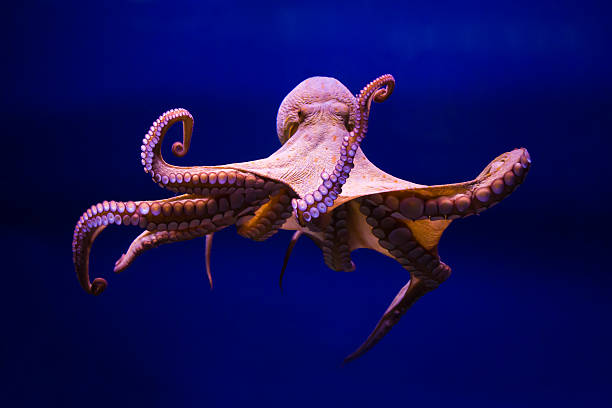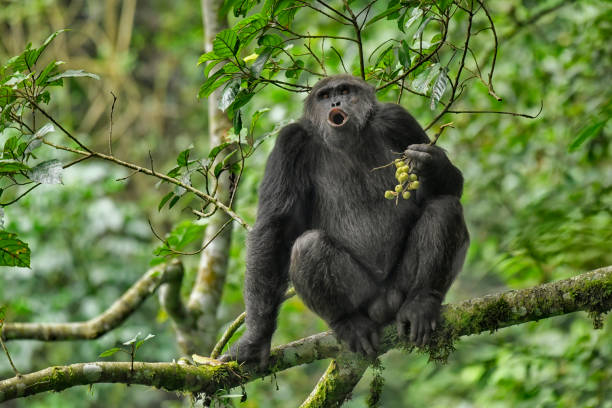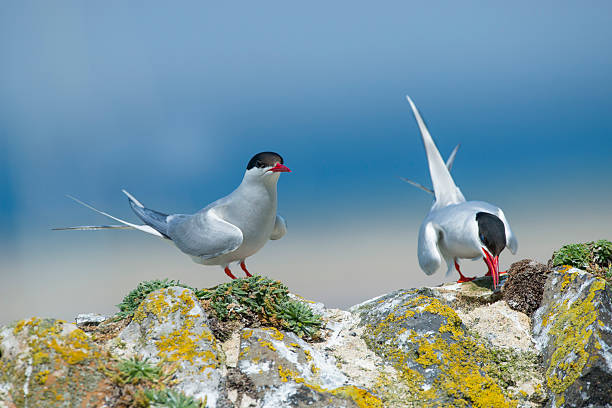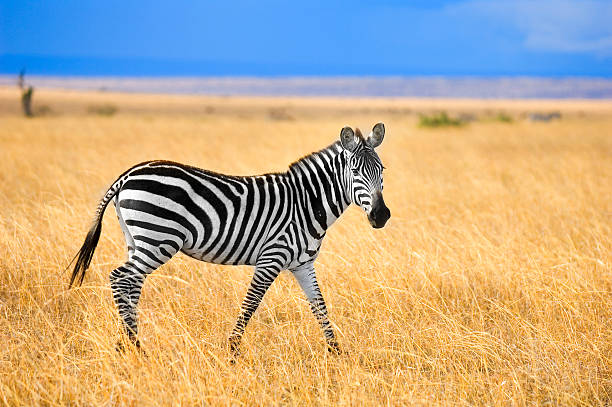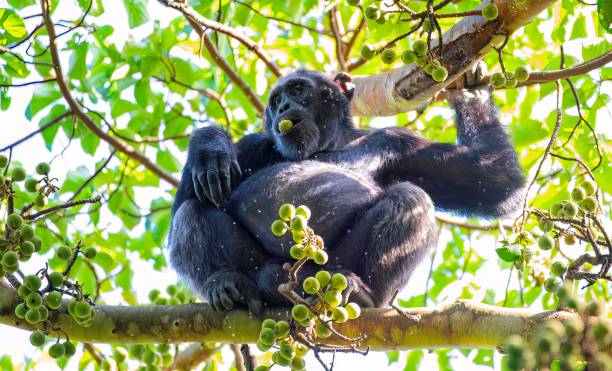The natural world is an endless stage of survival, where beauty often wears the mask of invisibility. To the casual observer, a patch of moss is just moss, a pile of leaves is just debris—but to a predator or prey, every color, pattern, and shadow carries meaning. Camouflage, the art of blending in, is one of nature’s most extraordinary strategies.
Camouflage is more than a disguise. It’s a story of adaptation, evolution, and genius—a quiet duel between hunter and hunted. Every leaf-like insect, every color-shifting octopus, every ghostly snow hare tells the same truth: in the theater of life, survival often depends on how well you can disappear.
Here are fifteen of nature’s most incredible masters of camouflage—creatures that have turned invisibility into art, strategy, and sometimes, sheer poetry.
1. Leaf-Tailed Gecko – The Phantom of Madagascar
Deep within Madagascar’s forests, something extraordinary hides in plain sight. The leaf-tailed gecko, with its jagged edges, mottled skin, and flattened tail, looks exactly like a dead leaf clinging to a branch. Even when you know where to look, your eyes might slide right past it.
This reptile’s camouflage is so perfect that it even mimics leaf veins, bite marks, and decay spots. When danger approaches, it doesn’t flee—it freezes, merging completely with its surroundings.
Beyond its looks, the leaf-tailed gecko’s behavior completes the illusion. It sways gently, as if moved by a breeze. Its stillness is hypnotic. It’s as though nature painted a leaf and gave it breath.
For predators like birds and snakes, spotting this gecko is almost impossible. For scientists, it’s a living masterpiece—a reminder of how evolution sculpts invisibility with astonishing detail.
2. Octopus – The Shapeshifting Genius
If there were an Oscar for camouflage, the octopus would win it every time. Using a combination of color, texture, and shape-shifting, it can transform its appearance in the blink of an eye.
Inside its skin lies a complex network of pigment cells called chromatophores, which expand or contract to change color. Underneath, reflective cells known as iridophores and leucophores scatter light, helping it match not just hues but the exact shimmer of sand, coral, or rock.
But the magic doesn’t stop there. The octopus can alter the texture of its skin—raising bumps or flattening smooth—to mimic seaweed, coral, or even the shadow of rippling water.
Marine biologists studying the mimic octopus of Indonesia discovered it could impersonate lionfish, sea snakes, and flatfish by changing both color and movement patterns. This isn’t just camouflage—it’s theatrical genius.
In the octopus, camouflage becomes intelligence itself: adaptable, creative, and deeply aware of its surroundings.
3. Snow Leopard – The Ghost of the Mountains
High in the icy Himalayas roams the elusive snow leopard, a predator so perfectly blended with its environment that locals call it “the ghost of the mountains.”
Its pale gray fur, patterned with rosettes and spots, mirrors the granite cliffs and snowfields of its high-altitude home. From just a few meters away, it can vanish completely into the rocky terrain.
Camouflage helps the snow leopard stalk prey—usually blue sheep or ibex—through treacherous slopes. But it also serves as protection. With few places to hide in open alpine landscapes, blending in becomes essential.
Their ability to move silently, combined with their invisibility, makes them one of the most mysterious big cats on Earth. For wildlife photographers, capturing one in the wild often feels like glimpsing a living ghost.
4. Leaf Insect – The Living Leaf
Imagine a leaf with legs. That’s the leaf insect—a delicate creature so convincing it fools even experienced eyes. Its body mimics every detail of foliage, from the veins on its “leaf” wings to the ragged edges that imitate insect bites.
Native to the tropical forests of Asia and Australia, leaf insects live among the very plants they resemble. When threatened, they rock gently back and forth, mimicking the motion of leaves rustling in the wind.
Their color changes with age and diet, adapting to the specific hues of their surroundings. Even their eggs look like seeds, ensuring the next generation begins life unnoticed.
To watch a leaf insect move is to witness illusion in motion—nature’s perfect impersonation of stillness and grace.
5. Arctic Hare – The Frost-Cloaked Runner
The Arctic hare has mastered the art of seasonal disguise. In summer, its coat turns grayish-brown, blending with tundra rocks and moss. But when winter’s snow blankets the land, the hare’s fur becomes pure white, making it nearly invisible against the frozen landscape.
This color transformation isn’t just about blending in; it’s about survival. Arctic hares rely on speed and stealth to evade predators like foxes and wolves. Their camouflage buys them crucial seconds in a chase—enough to disappear into a blizzard’s blur.
Unlike many animals that migrate or hibernate, the Arctic hare remains active through the brutal cold. Its fur thickens, its camouflage sharpens, and its resilience becomes a quiet testament to life’s adaptability in the harshest places on Earth.
6. Cuttlefish – The Magician of the Sea
If the octopus is the artist of camouflage, the cuttlefish is the illusionist. This cephalopod doesn’t just change color—it creates living light shows across its skin.
With chromatophores and iridophores working together, a cuttlefish can produce pulsating waves of color that confuse predators and mesmerize prey. It can imitate rocks, sand, or coral, even when viewed from multiple angles.
Scientists have found that cuttlefish don’t see color the way we do, yet their camouflage is flawless. They interpret patterns and brightness, using instinct and neural programming to “feel” their environment rather than simply see it.
In one moment, a cuttlefish is invisible. In the next, it flashes dazzling patterns for courtship or defense. Its mastery of disguise borders on the surreal—a reminder that in the ocean, invisibility can be as expressive as it is protective.
7. Stick Insect – The Branch That Breathes
The stick insect’s camouflage is so convincing it blurs the line between life and stillness. Looking exactly like a twig or branch, it stands motionless for hours, sometimes days, waiting for nightfall to feed.
Found in forests across the world, stick insects vary in shape and color to match local vegetation. Some species even have lichen-like patterns, while others can shed limbs to escape predators—a grim but effective defense.
What’s truly fascinating is their behavior. When a breeze stirs the trees, stick insects gently sway, perfectly mimicking the movement of surrounding twigs. This behavioral mimicry makes them almost impossible to detect, even by sharp-eyed birds.
Their camouflage is a masterpiece of minimalism—a living embodiment of the idea that survival often depends on the art of not being noticed.
8. Stonefish – The Ocean’s Deadliest Disguise
Beneath the coral reefs of the Indo-Pacific lies one of the ocean’s most dangerous creatures: the stonefish. It looks exactly like a piece of rock or coral—until you step too close.
Covered in mottled brown, gray, and orange skin, the stonefish’s rough texture and sedentary habits make it indistinguishable from the seafloor. When prey swims by, it strikes in less than 0.015 seconds.
Its venom is among the most potent in the animal kingdom, delivered through needle-like spines on its back. For divers and beachgoers, this disguise is a deadly one; stepping on a stonefish can be fatal.
But from an evolutionary standpoint, its camouflage is perfect—both for hunting and for protection. In a realm where visibility often means vulnerability, the stonefish’s stillness is its deadliest weapon.
9. Owl – The Silent Shadow
Owls are masters of night and silence, but their camouflage is equally remarkable. Their plumage—mottled with browns, grays, and blacks—blends seamlessly with tree bark, allowing them to perch unnoticed even in daylight.
The great horned owl, for instance, looks like a broken branch, its feather tufts mimicking twigs. The eastern screech owl’s patterns resemble tree knots so closely that it can sit inches from a human without being spotted.
This camouflage, combined with silent flight, makes owls apex nocturnal hunters. Their ability to vanish into the forest during the day ensures they remain hidden from both predators and prey.
When you walk through the woods and feel unseen eyes upon you, remember: an owl may be watching, invisible against the bark, the embodiment of quiet power cloaked in shadow.
10. Seahorse – The Underwater Chameleon
Among coral reefs and seaweed beds, the seahorse drifts gently, perfectly matching its colorful world. With bodies that mimic coral branches and the ability to change color, seahorses are nearly impossible to spot.
Their camouflage isn’t just visual—it’s behavioral. Seahorses sway with the currents, imitating the motion of seagrass. Their prehensile tails anchor them to coral, keeping them still even in turbulent waters.
Pygmy seahorses take this disguise to another level. Living exclusively on specific types of coral, they match their host’s color and texture so precisely that scientists only discovered them when examining coral samples under magnification.
In the seahorse, camouflage becomes serenity—an art of blending not just in color, but in movement, rhythm, and presence.
11. Chameleon – The Icon of Color Change
No list of camouflage masters would be complete without the chameleon. These reptiles, found mainly in Africa and Madagascar, have long captured human fascination for their ability to change color.
Contrary to popular belief, chameleons don’t change color just to hide. Their transformations reflect temperature, mood, and communication. However, their baseline camouflage—matching leaves, bark, or branches—is remarkable in itself.
Beneath their scaly skin are layers of specialized cells called iridophores, which manipulate light to produce different colors. By adjusting these cells, a chameleon can shift from bright greens to muted browns within seconds.
When perched quietly among leaves, it becomes part of the foliage—a still, observing ghost of the forest. Its camouflage is not only physical but emotional, mirroring its inner state and the world around it.
12. Potoo Bird – The Master of Stillness
In the rainforests of Central and South America, the potoo bird practices an ancient art: invisibility through stillness. During the day, it perches on tree stumps, its mottled feathers blending perfectly with bark.
When danger approaches, the potoo closes its eyes to narrow slits, stretches its neck, and freezes completely. The transformation is uncanny—it looks exactly like a broken branch.
At night, this ghostly bird comes alive, hunting moths and insects with wide, luminous eyes. Its eerie call echoes through the forest, adding mystery to its already otherworldly existence.
The potoo’s disguise is not about color alone—it’s about performance. Its entire body becomes an illusion, proving that sometimes the greatest camouflage is stillness itself.
13. Flounder – The Flat-Faced Illusionist
On sandy ocean floors, the flounder reigns as a master of disguise. This flat fish lies motionless, altering its coloration to match the surrounding seabed.
Flounders have remarkable control over their pigmentation. Using specialized cells called chromatophores, they can mimic not only color but the pattern and texture of sand, gravel, or algae.
Their camouflage isn’t static. Scientists have observed flounders adapting to new backgrounds within minutes. Even under artificial lighting, they adjust to blend seamlessly—a skill that aids in both hunting and avoiding predators.
When motionless, a flounder vanishes completely—an unassuming patch of seafloor that hides a patient and deadly hunter.
14. Peppered Moth – The Survivor of the Industrial Age
The peppered moth’s story is one of evolution’s most famous examples. Before the Industrial Revolution, these moths were pale with speckled wings, blending perfectly with lichen-covered trees.
When soot darkened the forests of England, a darker variety began to thrive, camouflaging against polluted bark. Within decades, natural selection had shifted the population entirely.
Today, as air quality has improved, lighter moths are once again more common. This rapid adaptability demonstrates how camouflage evolves in direct response to environmental change.
The peppered moth’s wings tell a story of resilience—of nature’s ability to adapt, transform, and survive in the face of human impact.
15. Mossy Frog – The Camouflage King of Amphibians
Hidden among the damp moss and lichen of Southeast Asia’s forests lives the Vietnamese mossy frog, perhaps the most astonishing of all camouflage masters.
Its skin is covered in green, black, and brown bumps that mimic moss so perfectly it can vanish against a wet rock or tree trunk. Even when spotted, the frog’s shape breaks apart visually, making it difficult for predators to distinguish where the frog ends and the environment begins.
When threatened, it curls into a ball and stays motionless, completing its disguise. Even its croak echoes like dripping water, blending sound with the background.
The mossy frog’s camouflage isn’t just visual—it’s sensory. It tricks sight, sound, and perception itself. To find one is to uncover the very definition of natural illusion.
The Science of Invisibility
Camouflage in animals arises from millions of years of evolution—a collaboration between biology and environment. Scientists classify camouflage into several main strategies:
Cryptic coloration allows animals to blend directly with their background.
Disruptive coloration breaks up outlines with bold patterns, like the spots of a leopard.
Mimicry takes imitation further, allowing animals to resemble entirely different species or objects.
In every case, the purpose is the same: survival. Whether to ambush prey or avoid becoming it, camouflage represents one of nature’s most creative forms of intelligence.
The Emotional Power of Disguise
There’s something profoundly emotional about camouflage. It speaks to the fragility and brilliance of life—how every creature, no matter how small, finds a way to exist in balance with its world.
A gecko becomes a leaf. A fish becomes the ocean floor. A cat becomes the mountain itself. These transformations remind us that survival is not just a struggle—it’s an art form.
Camouflage is nature’s poetry written in shadows, patterns, and patience. It’s the language of silence, the genius of adaptation, and the invisible heartbeat of evolution.
In a world that often celebrates visibility, these creatures remind us that sometimes the most extraordinary things are those we never see at all.
